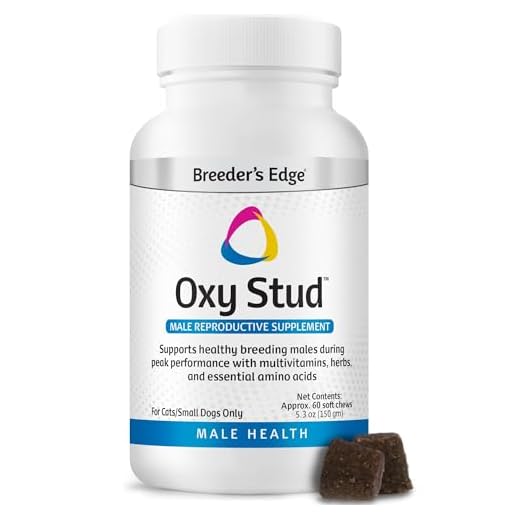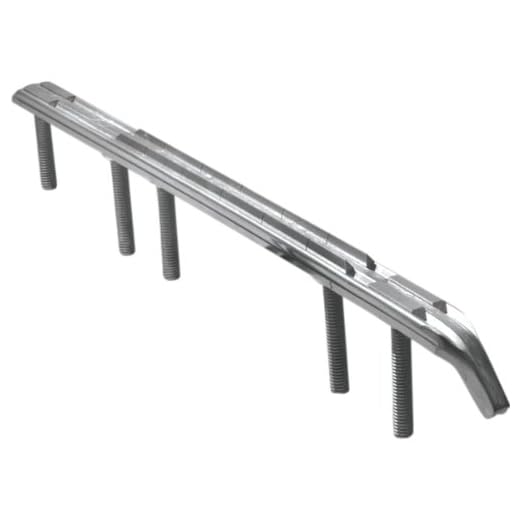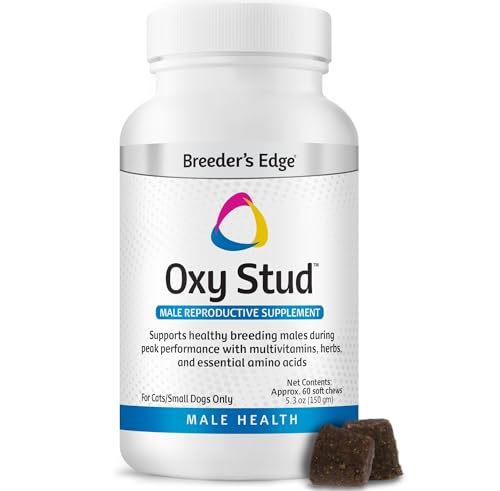



Locating a suitable partner for mating requires a strategic approach. Begin by exploring local breeders who specialize in your desired breed. They often have males available for stud services, and their expertise can guide you in making the right choice.
Next, consider joining breed-specific online communities or forums. Fellow enthusiasts frequently share information about available studs, and you can connect with those who have experience in this area. Networking can lead you to reputable options that align with your goals.
Don’t overlook the importance of health screenings. Ensure that any potential mate has passed required veterinary tests to avoid hereditary issues. Prioritize genetic health to promote a strong lineage, which is beneficial for both the kittens and their future homes.
Lastly, visit local shelters or rescue organizations. Sometimes, they may have male cats that are not only looking for homes but also for opportunities to contribute to the community through responsible breeding. This approach not only helps you find a mate but also supports animal welfare.
Assessing Your Female Cat’s Breeding Readiness
Check for signs of heat, which typically occurs every few weeks during warmer months. Look for increased vocalizations, restlessness, and affectionate behavior. Your companion may roll on the floor, raise her hindquarters, or even display a more playful demeanor.
Monitor her appetite; during heat, some felines may eat less, while others might show increased interest in food. Observe changes in grooming habits; a female in estrus may groom herself more often. Keep an eye on her litter box habits; she might mark her territory more frequently.
Consult your veterinarian for a health assessment before considering mating. Ensure she’s at least 1 year old and in good health, as early breeding can lead to complications. Vaccinations and parasite control should be up to date to safeguard her health.
Consider her personality and socialization. A confident and friendly disposition can enhance the chances of a successful pairing. If she’s timid or aggressive, it may affect the mating process.
Timing is key; the optimal window for mating is usually within the first 2-3 days of her heat cycle. Keep track of her cycles to plan accordingly.
Lastly, prepare for potential challenges. Not every attempt will lead to a successful mating, and it’s essential to remain patient and observant throughout the process.
Finding Reputable Breeders or Stud Services
Seek out established breeders who prioritize health, temperament, and breed standards. Look for those who are registered with recognized cat associations, as this indicates adherence to ethical practices. Online directories and breed-specific clubs can guide you to trustworthy sources.
Visit forums or social media groups dedicated to your feline’s breed. Engaging with fellow enthusiasts can provide personal recommendations and experiences regarding reliable studs. Always ask for references and verify their legitimacy by checking reviews or testimonials.
Consider local veterinary clinics or pet shows, where you may connect with breeders directly. These events offer opportunities to assess the physical condition and behavior of potential mates, ensuring they meet your expectations.
Select a stud service that offers transparency regarding health screenings, vaccinations, and pedigree information. This is crucial for maintaining the lineage’s integrity. Don’t hesitate to inquire about the breeding process and any guarantees they provide.
Finally, ensure the environment where the stud is kept is clean and safe. A well-maintained space reflects the breeder’s dedication to animal welfare. Remember, a responsible choice now can lead to a healthier and happier litter.
For additional insights, check out this resource on whether is parlor palm toxic to cats.
Evaluating Potential Studs for Health and Compatibility
Check the pedigree. A well-documented lineage can reveal potential health issues common in specific breeds. Look for inherited conditions like hypertrophic cardiomyopathy or hip dysplasia that may affect offspring.
Assess the physical condition. A strong, healthy physique is crucial. Look for a shiny coat, clear eyes, and good body weight. Any signs of lethargy or unusual behavior could indicate underlying health problems.
Request veterinary records. A reputable owner should provide proof of vaccinations, parasite control, and recent health check-ups. Ensure the feline is tested for common infectious diseases like feline leukemia virus (FeLV) and feline immunodeficiency virus (FIV).
Observe temperament. Compatibility isn’t just about looks; the personality of the potential partner matters too. A calm and friendly demeanor will help create a stress-free environment for the mating process.
Consider behavioral traits. Aggression or territoriality can complicate interactions. Spend time with the prospective mate to gauge how he reacts to other animals, especially females in heat.
Evaluate energy levels. A compatible energy level between your female and the potential partner is significant. Mismatched activity levels can lead to frustration during interactions.
Review breeding history. If the option has previous litters, inquire about their health and temperament. Successful past pairings can be a good indicator of future performance.
Take note of the environment. A well-maintained living space reflects responsible ownership. A clean and safe setting suggests that the potential partner is well cared for.
Lastly, trust your instincts. If something feels off about the choice, it’s worth reconsidering. The right match can lead to a healthy and harmonious outcome.
Locating a suitable partner for mating requires a strategic approach. Begin by exploring local breeders who specialize in your desired breed. They often have males available for stud services, and their expertise can guide you in making the right choice.
Next, consider joining breed-specific online communities or forums. Fellow enthusiasts frequently share information about available studs, and you can connect with those who have experience in this area. Networking can lead you to reputable options that align with your goals.
Don’t overlook the importance of health screenings. Ensure that any potential mate has passed required veterinary tests to avoid hereditary issues. Prioritize genetic health to promote a strong lineage, which is beneficial for both the kittens and their future homes.
Lastly, visit local shelters or rescue organizations. Sometimes, they may have male cats that are not only looking for homes but also for opportunities to contribute to the community through responsible breeding. This approach not only helps you find a mate but also supports animal welfare.
Assessing Your Female Cat’s Breeding Readiness
Check for signs of heat, which typically occurs every few weeks during warmer months. Look for increased vocalizations, restlessness, and affectionate behavior. Your companion may roll on the floor, raise her hindquarters, or even display a more playful demeanor.
Monitor her appetite; during heat, some felines may eat less, while others might show increased interest in food. Observe changes in grooming habits; a female in estrus may groom herself more often. Keep an eye on her litter box habits; she might mark her territory more frequently.
Consult your veterinarian for a health assessment before considering mating. Ensure she’s at least 1 year old and in good health, as early breeding can lead to complications. Vaccinations and parasite control should be up to date to safeguard her health.
Consider her personality and socialization. A confident and friendly disposition can enhance the chances of a successful pairing. If she’s timid or aggressive, it may affect the mating process.
Timing is key; the optimal window for mating is usually within the first 2-3 days of her heat cycle. Keep track of her cycles to plan accordingly.
Lastly, prepare for potential challenges. Not every attempt will lead to a successful mating, and it’s essential to remain patient and observant throughout the process.
Finding Reputable Breeders or Stud Services
Seek out established breeders who prioritize health, temperament, and breed standards. Look for those who are registered with recognized cat associations, as this indicates adherence to ethical practices. Online directories and breed-specific clubs can guide you to trustworthy sources.
Visit forums or social media groups dedicated to your feline’s breed. Engaging with fellow enthusiasts can provide personal recommendations and experiences regarding reliable studs. Always ask for references and verify their legitimacy by checking reviews or testimonials.
Consider local veterinary clinics or pet shows, where you may connect with breeders directly. These events offer opportunities to assess the physical condition and behavior of potential mates, ensuring they meet your expectations.
Select a stud service that offers transparency regarding health screenings, vaccinations, and pedigree information. This is crucial for maintaining the lineage’s integrity. Don’t hesitate to inquire about the breeding process and any guarantees they provide.
Finally, ensure the environment where the stud is kept is clean and safe. A well-maintained space reflects the breeder’s dedication to animal welfare. Remember, a responsible choice now can lead to a healthier and happier litter.
For additional insights, check out this resource on whether is parlor palm toxic to cats.
Evaluating Potential Studs for Health and Compatibility
Check the pedigree. A well-documented lineage can reveal potential health issues common in specific breeds. Look for inherited conditions like hypertrophic cardiomyopathy or hip dysplasia that may affect offspring.
Assess the physical condition. A strong, healthy physique is crucial. Look for a shiny coat, clear eyes, and good body weight. Any signs of lethargy or unusual behavior could indicate underlying health problems.
Request veterinary records. A reputable owner should provide proof of vaccinations, parasite control, and recent health check-ups. Ensure the feline is tested for common infectious diseases like feline leukemia virus (FeLV) and feline immunodeficiency virus (FIV).
Observe temperament. Compatibility isn’t just about looks; the personality of the potential partner matters too. A calm and friendly demeanor will help create a stress-free environment for the mating process.
Consider behavioral traits. Aggression or territoriality can complicate interactions. Spend time with the prospective mate to gauge how he reacts to other animals, especially females in heat.
Evaluate energy levels. A compatible energy level between your female and the potential partner is significant. Mismatched activity levels can lead to frustration during interactions.
Review breeding history. If the option has previous litters, inquire about their health and temperament. Successful past pairings can be a good indicator of future performance.
Take note of the environment. A well-maintained living space reflects responsible ownership. A clean and safe setting suggests that the potential partner is well cared for.
Lastly, trust your instincts. If something feels off about the choice, it’s worth reconsidering. The right match can lead to a healthy and harmonious outcome.
Locating a suitable partner for mating requires a strategic approach. Begin by exploring local breeders who specialize in your desired breed. They often have males available for stud services, and their expertise can guide you in making the right choice.
Next, consider joining breed-specific online communities or forums. Fellow enthusiasts frequently share information about available studs, and you can connect with those who have experience in this area. Networking can lead you to reputable options that align with your goals.
Don’t overlook the importance of health screenings. Ensure that any potential mate has passed required veterinary tests to avoid hereditary issues. Prioritize genetic health to promote a strong lineage, which is beneficial for both the kittens and their future homes.
Lastly, visit local shelters or rescue organizations. Sometimes, they may have male cats that are not only looking for homes but also for opportunities to contribute to the community through responsible breeding. This approach not only helps you find a mate but also supports animal welfare.
Assessing Your Female Cat’s Breeding Readiness
Check for signs of heat, which typically occurs every few weeks during warmer months. Look for increased vocalizations, restlessness, and affectionate behavior. Your companion may roll on the floor, raise her hindquarters, or even display a more playful demeanor.
Monitor her appetite; during heat, some felines may eat less, while others might show increased interest in food. Observe changes in grooming habits; a female in estrus may groom herself more often. Keep an eye on her litter box habits; she might mark her territory more frequently.
Consult your veterinarian for a health assessment before considering mating. Ensure she’s at least 1 year old and in good health, as early breeding can lead to complications. Vaccinations and parasite control should be up to date to safeguard her health.
Consider her personality and socialization. A confident and friendly disposition can enhance the chances of a successful pairing. If she’s timid or aggressive, it may affect the mating process.
Timing is key; the optimal window for mating is usually within the first 2-3 days of her heat cycle. Keep track of her cycles to plan accordingly.
Lastly, prepare for potential challenges. Not every attempt will lead to a successful mating, and it’s essential to remain patient and observant throughout the process.
Finding Reputable Breeders or Stud Services
Seek out established breeders who prioritize health, temperament, and breed standards. Look for those who are registered with recognized cat associations, as this indicates adherence to ethical practices. Online directories and breed-specific clubs can guide you to trustworthy sources.
Visit forums or social media groups dedicated to your feline’s breed. Engaging with fellow enthusiasts can provide personal recommendations and experiences regarding reliable studs. Always ask for references and verify their legitimacy by checking reviews or testimonials.
Consider local veterinary clinics or pet shows, where you may connect with breeders directly. These events offer opportunities to assess the physical condition and behavior of potential mates, ensuring they meet your expectations.
Select a stud service that offers transparency regarding health screenings, vaccinations, and pedigree information. This is crucial for maintaining the lineage’s integrity. Don’t hesitate to inquire about the breeding process and any guarantees they provide.
Finally, ensure the environment where the stud is kept is clean and safe. A well-maintained space reflects the breeder’s dedication to animal welfare. Remember, a responsible choice now can lead to a healthier and happier litter.
For additional insights, check out this resource on whether is parlor palm toxic to cats.
Evaluating Potential Studs for Health and Compatibility
Check the pedigree. A well-documented lineage can reveal potential health issues common in specific breeds. Look for inherited conditions like hypertrophic cardiomyopathy or hip dysplasia that may affect offspring.
Assess the physical condition. A strong, healthy physique is crucial. Look for a shiny coat, clear eyes, and good body weight. Any signs of lethargy or unusual behavior could indicate underlying health problems.
Request veterinary records. A reputable owner should provide proof of vaccinations, parasite control, and recent health check-ups. Ensure the feline is tested for common infectious diseases like feline leukemia virus (FeLV) and feline immunodeficiency virus (FIV).
Observe temperament. Compatibility isn’t just about looks; the personality of the potential partner matters too. A calm and friendly demeanor will help create a stress-free environment for the mating process.
Consider behavioral traits. Aggression or territoriality can complicate interactions. Spend time with the prospective mate to gauge how he reacts to other animals, especially females in heat.
Evaluate energy levels. A compatible energy level between your female and the potential partner is significant. Mismatched activity levels can lead to frustration during interactions.
Review breeding history. If the option has previous litters, inquire about their health and temperament. Successful past pairings can be a good indicator of future performance.
Take note of the environment. A well-maintained living space reflects responsible ownership. A clean and safe setting suggests that the potential partner is well cared for.
Lastly, trust your instincts. If something feels off about the choice, it’s worth reconsidering. The right match can lead to a healthy and harmonious outcome.








